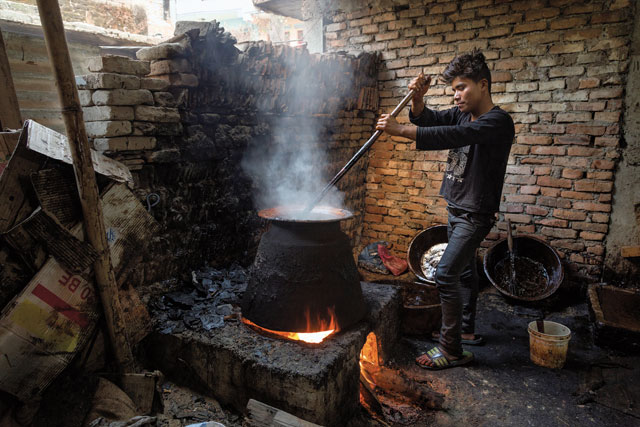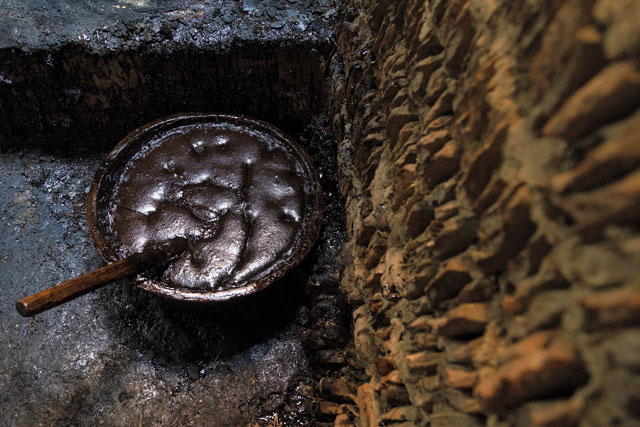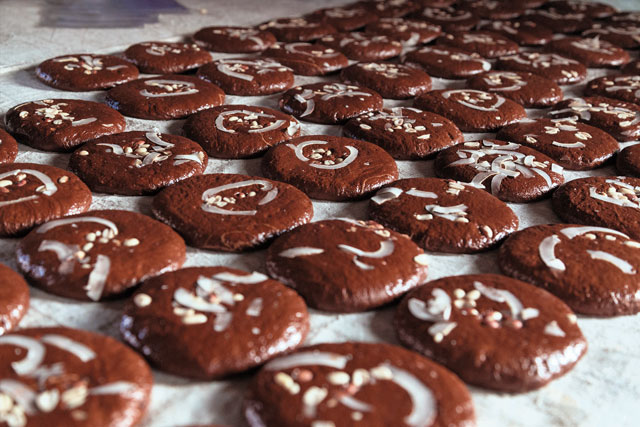Among the important things that define our identity, one must add chaku to the list, because it’s something that is “Made in Nepal”.
 R
R
esting on the hill above Dhapasi is the serene Tokha village, and all through the village runs a fragrance. It is fresh, appetizing, and irresistible to the senses. Children are running around the street, accustomed to, and unaware of, the delicate scent that embraces the air. As I approach the gate, a homely familiarity hugs away the chilly weather, and the warm aura leads me to the source. “Tokha Chaku”, reads the label.

Rich in culture and abundant with inclusiveness, Nepal is a melting pot of diverse ethnic traits. Closely embedded in this ethnicity is Nepali cuisine; a trait without which the sanctity of mere culture is unaccounted for. With the winter now more brittle than ever, and the cold rushing into our daily lives, people have been looking for ways to revive the warmth in their bodies. As part of every country’s culture, people eat different foods to warm themselves. In Switzerland, they enjoy the delicacies of sweet chocolate, while in France, they toast on wine. Similarly, in Nepal, there is a custom of snacking on chaku, a tuck that is a cardinal part of the Newari cuisine.
 Famous for its production of chaku, Tokha has a production factory around each corner, and every other person has either a piece of chaku or a “til ko laddu” in their hand. As I enter the first factory, an overpowering heat gushes through, followed by the musky scent of chaku being heated. Looking around, you see a huge boiling pot on a flame, simmering with molten sugarcane, or sakhar. Next to it are two hollow platforms, where the molten sakhar is cooling. There are three women folding and packing up the well-made chakhu on the sidelines. But, all of this isn’t what catches the eye. A colossal mound of chaku has been pinned on a nail on a wood board, and is being molded and pulled back and forth with great might.
Famous for its production of chaku, Tokha has a production factory around each corner, and every other person has either a piece of chaku or a “til ko laddu” in their hand. As I enter the first factory, an overpowering heat gushes through, followed by the musky scent of chaku being heated. Looking around, you see a huge boiling pot on a flame, simmering with molten sugarcane, or sakhar. Next to it are two hollow platforms, where the molten sakhar is cooling. There are three women folding and packing up the well-made chakhu on the sidelines. But, all of this isn’t what catches the eye. A colossal mound of chaku has been pinned on a nail on a wood board, and is being molded and pulled back and forth with great might.

On asking the owner of the factory about this process, he replies, “It’s to make the color of the chaku lighter.” On the terrace are people making til ko laddus, all the while listening to folk music. This tradition of making chaku in the winter is one that has been alive for centuries in the Newar community. Chaku, in Newari, means sweet, and Tokha means ‘massive sugarcane cultivation’. The existence of chaku is just as old as the formation of Tokha village. Along with being the center of its production, Tokha is also the birthplace of chaku.

“Our forefathers taught us the art of making chaku,” says Thulaba, the father of the factory owner. He is the eldest and most experienced of all chaku producers in Tokha, and the most passionate one at that. He describes just how delicate the process of making chaku is. “If it’s at a wrong temperature, it will turn out bitter and fleshy. Nobody will like it. It should be sweet and soft enough to melt in your mouth.”

The workers and owners involved in chaku production in Tokha, all seem to be part of an extended family, related to each other in one way or the other. It is another beautiful aspect of Nepali culture; families stick together. They are in harmony. Even a small boy, about 10 years old, was helping to pack the chaku. Little things like these are what catch your eye, make a mark on your heart; and little people like these are a testament to the fact that our future generation will protect our culture.
The owner of Tokha Chaku, Hansaraj Shrestha, talks about the importance of chaku. “The reason people only eat it in winter is because it gives warmth to the body; in summer it is not popular,” he says. On asking if they have any business at all during the summer, he replies, “Of course. Chaku is very beneficial for pregnant women, as it helps provide nutrition to their bodies and helps them make milk,” he says, adding, “Sutkeri aaimai lai ta chaku nabhai hunna.” Meaning, “A nursing mother simply cannot do without chaku.” He also describes how their process of making chaku is extremely hygienic, as they do not use any chemicals to make it sweeter or lighter. “Unlike chocolate, it doesn’t do any harm to the body or to our dental hygiene,” he says proudly.
This is not the only thing that he and the people of Tokha are proud of. Chaku is a big part of the Newari culture, and of our Nepali tradition. It is a symbol of our cuisine, our traditions, and our Nepali pride. In the midst of the rush towards Westernization, it is a strong pillar of our Nepali authenticity. It depicts of our way of life, and is a link between our past and present, a guideline for the future. Chaku isn’t only an example of Nepali food, it is a Nepali trademark.











